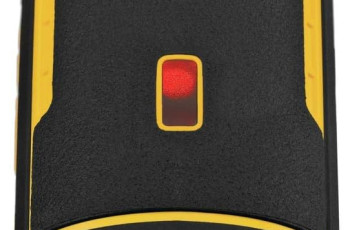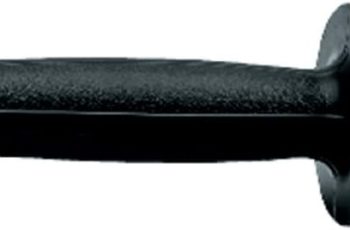If you love working with angle grinders, you know that they can kick up quite a bit of dust. Not only can this dust be messy, but it can also be harmful to your health. That’s why it’s important to have effective dust extraction methods in place when using angle grinders. In this article, we will explore different dust extraction methods that you can implement to keep your workspace clean and safe. From using dust shrouds and vacuum systems to wet cutting techniques, we’ve got you covered. Say goodbye to dusty workstations and hello to a healthier working environment with these practical tips and tricks.
Dust Extraction Methods for Angle Grinders
Angle grinders are versatile tools commonly used in construction and metalworking industries. They are highly effective in cutting, grinding, and polishing various materials. However, one major concern when using angle grinders is the generation of dust particles. These dust particles can pose serious health hazards if inhaled, leading to respiratory issues and even long-term lung diseases. Therefore, it is crucial to have proper dust extraction methods in place to protect your health and maintain a clean working environment.
Importance of Dust Extraction
Dust extraction is essential when working with angle grinders as it helps in keeping the air clean and reducing the risk of respiratory ailments. Inhaling dust particles can lead to serious health issues such as silicosis, which is caused by long-term exposure to silica dust. Silicosis can result in lung scarring and irreversible damage. By implementing effective dust extraction methods, you can prevent the release of harmful dust particles into the air, safeguarding your health and the health of those around you.
Common Dust Extraction Methods
There are several dust extraction methods available for angle grinders. Each method offers its own benefits and features, making it important to choose the right method for your specific needs. Let’s explore some of the most commonly used dust extraction methods:
1. Vacuum Dust Shroud
A vacuum dust shroud is a device that attaches to the angle grinder and creates a seal around the cutting or grinding area. It is connected to a vacuum cleaner or dust extractor, which sucks up the dust particles generated during operation. The vacuum dust shroud effectively captures the dust at its source, preventing it from dispersing into the air.
1.1 Benefits of Vacuum Dust Shroud
The main advantage of using a vacuum dust shroud is its ability to contain and remove dust directly at the point of generation. This not only keeps the working area clean but also minimizes the risk of inhaling harmful particles. Additionally, using a vacuum dust shroud can also improve the visibility of the workpiece, allowing for more accurate cuts or grinds.
1.2 Installation and Usage of Vacuum Dust Shroud
Installing a vacuum dust shroud is relatively simple and typically involves attaching it securely to the angle grinder using the provided attachments. Once installed, the shroud should create a tight seal around the cutting or grinding area. Connect the shroud to a vacuum cleaner or dust extractor, ensuring that it is properly connected to provide optimal suction. Turn on the vacuum cleaner or dust extractor before starting the angle grinder to ensure efficient dust extraction throughout the operation.
2. Dust Collection Bags
Another common dust extraction method for angle grinders involves the use of dust collection bags. These bags are designed to capture and collect the dust particles released during grinding or cutting. Dust collection bags are usually attached to the exhaust port of the angle grinder, allowing the air to pass through while trapping the dust particles.
2.1 Benefits of Dust Collection Bags
Dust collection bags are highly portable and convenient to use. They provide an effective solution for small-scale projects where a vacuum dust shroud may not be necessary. Dust collection bags also offer a cost-effective option for dust extraction, eliminating the need for a separate vacuum cleaner or dust extractor.
2.2 Installation and Usage of Dust Collection Bags
Installing a dust collection bag is a straightforward process. Attach the bag securely to the exhaust port of the angle grinder using the provided attachments. Ensure that the bag is properly sealed to prevent any dust leakage. As you operate the angle grinder, the dust collection bag will capture and store the dust particles. Remember to periodically empty the bag to maintain its efficiency.
3. Wet Dust Suppression
Wet dust suppression is a highly effective dust extraction method that involves using water to suppress dust particles as they are generated. This method works by wetting the dust, causing it to become heavy and settle down, preventing it from becoming airborne.
3.1 Benefits of Wet Dust Suppression
The primary advantage of wet dust suppression is its efficiency in controlling dust emissions. By wetting the dust particles, this method effectively eliminates airborne dust, keeping the working environment clean and free from potentially harmful particles. Wet dust suppression is particularly useful in applications where dry dust extraction methods may not be as effective.
3.2 Installation and Usage of Wet Dust Suppression
Using wet dust suppression requires the attachment of a water source, such as a hose or water bottle, to the angle grinder. As you operate the grinder, water is sprayed onto the cutting or grinding area to dampen the dust particles. Ensure that the water flow is sufficient to adequately suppress the dust. It is important to note that wet dust suppression may not be suitable for certain materials or applications, so it is essential to consider the specific requirements of your project before implementing this method.
4. Portable Dust Collectors
Portable dust collectors are compact units specifically designed for dust extraction in various applications, including angle grinder operations. These devices utilize fans and filters to capture and contain dust particles, preventing them from being released into the surrounding air.
4.1 Benefits of Portable Dust Collectors
Portable dust collectors offer a high level of flexibility and mobility. These compact units can be easily moved and positioned according to the needs of the project, allowing for effective dust extraction in different work areas. Portable dust collectors also provide a centralized dust extraction system, making them suitable for projects that require frequent relocation or work in multiple locations.
4.2 Installation and Usage of Portable Dust Collectors
Installing a portable dust collector involves connecting it to the angle grinder using the provided attachments. Ensure that the dust collector is properly positioned to capture the dust particles generated during operation. Turn on the dust collector before starting the angle grinder to ensure continuous extraction throughout the process. Portable dust collectors typically have filters that need regular cleaning or replacement, so it is important to follow the manufacturer’s instructions for maintenance.
5. Dust Extraction Systems
Dust extraction systems are comprehensive setups designed to provide efficient dust extraction in large-scale industrial settings. These systems include powerful fans, ductwork, and filters to effectively capture and remove dust particles from the air.
5.1 Benefits of Dust Extraction Systems
Dust extraction systems offer the highest level of dust extraction efficiency, making them ideal for demanding applications and large-scale industrial projects. These systems can effectively handle large volumes of dust and ensure the air remains clean and safe for workers. Dust extraction systems also help in complying with environmental regulations and maintaining a clean and professional work environment.
5.2 Installation and Usage of Dust Extraction Systems
Installing a dust extraction system requires the expertise of professionals due to its complexity. The system is typically customized to suit the specific needs of the facility and incorporates a network of ductwork to capture dust from individual workstations. The extracted dust is then filtered and collected in a central dust collector. Regular maintenance and inspection are critical to ensure the system operates efficiently and effectively.
Choosing the Right Dust Extraction Method
When selecting a dust extraction method for your angle grinder, it is important to consider factors such as the size and nature of the project, as well as the specific materials being worked on. For smaller projects or occasional use, dust collection bags or portable dust collectors may provide adequate dust extraction. However, for larger or more frequent operations, vacuum dust shrouds or comprehensive dust extraction systems may be more suitable.
Considerations for Dust Extraction
Regardless of the dust extraction method chosen, there are a few considerations to keep in mind. Firstly, ensure that the dust extraction method is compatible with your angle grinder model. Some methods may require specific attachments or modifications to the grinder. Secondly, regularly inspect and clean the dust extraction components to maintain their effectiveness. Lastly, always wear appropriate personal protective equipment (PPE) such as respirators, safety glasses, and gloves to further reduce the risk of exposure to dust particles.
Conclusion
In conclusion, implementing effective dust extraction methods is crucial when using angle grinders to ensure a safe and healthy working environment. Various options, such as vacuum dust shrouds, dust collection bags, wet dust suppression, portable dust collectors, and dust extraction systems, are available to cater to different project requirements. By choosing the right dust extraction method and following the proper installation and usage guidelines, you can effectively control dust emissions, protect your health, and maintain a clean working area. Remember to prioritize safety and regularly maintain your dust extraction equipment to ensure its optimal performance.



